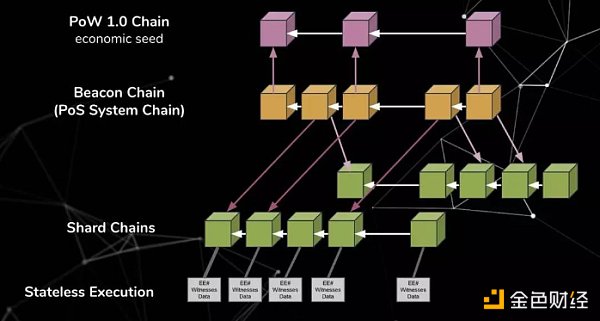Insights on the future development of Ethereum How to unlock statelessness?
Ethereum's future development and unlocking statelessness.Author: @rudolf6_ Translation: Huohuo/Baihua Blockchain

Ethereum is about to embrace statelessness. What does this mean? Why should you pay attention to it? Let’s briefly interpret it in conjunction with an important part of Ethereum’s future roadmap:
- MEV Track Overview Have we underestimated its importance?
- SEC is expected to give the green light to Ethereum futures ETF expected to be listed as early as October, with a total of 16 applications pending approval.
- Wood Sister’s Long Push Raising interest rates by the central bank is a more important goal than controlling inflation – bursting the Chinese bubble
As researchers and developers make progress in key scalability work (see EIP-4844 for details), another R&D work is underway to further enhance the long-term resilience of the network by addressing one of its oldest and unresolved challenges: the continuously growing state size of Ethereum.
Although state growth is not a new problem, in the past year, we have seen increasing concerns about the centralization factors and related risks in Ethereum.
So, what exactly is “state growth” and what does it have to do with decentralization, scalability, and the long-term health of the network?
Today, full nodes must store a large and continuously growing replica of the complete Ethereum state. This is a problem because it forces node operators to have high hardware requirements (2TB SSD). High hardware requirements equal centralization power.
Statelessness solves this problem by allowing nodes to verify blocks without needing to store any state!
How exactly does it work? By reducing the size of proofs to be small enough to be included with each block.
More detailed information will be available later…
The earlier statelessness is implemented in Ethereum, the more people can run full nodes with their existing hardware (e.g., staking through mobile phones). This can not only achieve significant victories by enhancing decentralization but also open up opportunities for future key research and development areas.
In the past few years, @vitalikbuterin has written a lot of valuable content about statelessness.
Link: https://twitter.com/VitalikButerin/status/1360277592243392512
So, how can we obtain small proofs and achieve statelessness?
In short: by upgrading Ethereum’s underlying data structure to something called Verkle trees.
Thanks to the tireless efforts of many people, this work is steadily progressing! Multiple teams are preparing stateless prototypes✨
Want to track the latest progress on statelessness and Verkle? Or want to get involved? Please visit http://verkle.info for more background information, weekly updates, open questions, etc.
Although there is still a lot of work to be done, and the focus is still on releasing EIP-4844 in the next hard fork, there will definitely be more exciting developments in statelessness in the coming months.
Many people are working hard to promote the application of statelessness/Verkle on Ethereum. Please refer to http://verkle.info.
We will continue to update Blocking; if you have any questions or suggestions, please contact us!
Was this article helpful?
93 out of 132 found this helpful
Related articles
- Full text of the speech by Hong Kong Chief Executive Carrie Lam at the 2023 Summit on Innovative Technology and Art Development
- The evolution of the order flow lifecycle What changes does intent-centric bring?
- Exploring the future of Web3 social Building social graphs to solve customer acquisition problem.
- Delphi Digital Researcher UniswapX is Changing the Landscape of DEX
- CME Group will launch BTC and ETH reference rates for Asian investors.
- Trump has nearly $5 million in Ethereum NFT licensing fees, with revenue of nearly $4.9 million.
- Cryptocurrency mining companies establish a Digital Energy Committee to strengthen lobbying power in Washington






